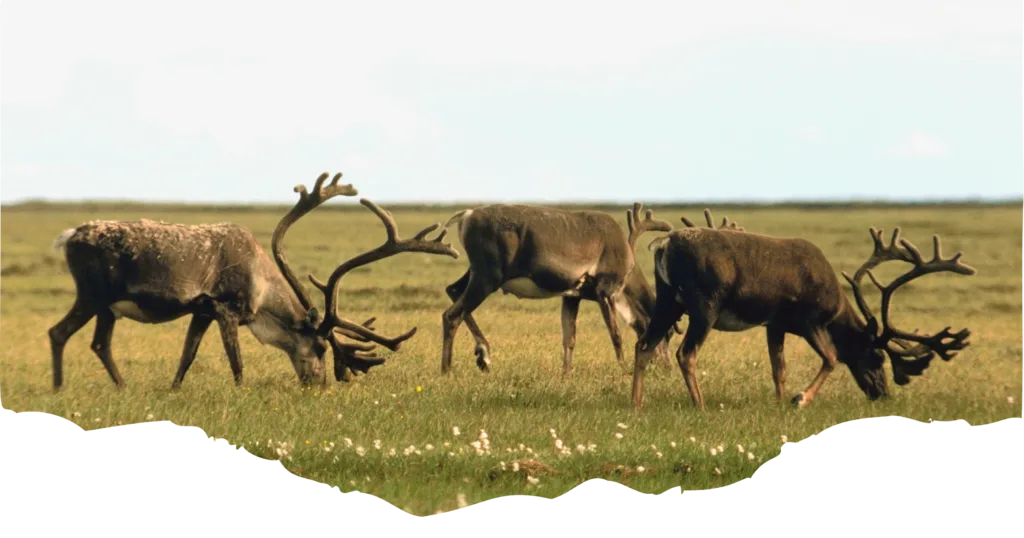
Caribou Conservation in Action: Discover how your Toronto Zoo is helping to protect Canadian Caribou.
Nestled in the heart of the Tundra trek at your Toronto Zoo, there’s a special story unfolding, one that’s as unique as it is vital for the future of the caribou population. Since 2018, the Toronto Zoo has been home to four remarkable Porcupine caribou: Mitella, Hyacinth, Deliah and Rosa. While similar in appearance, they each have their own distinctive personalities so that only their keepers and sharp-eyed guests can tell them apart. But there’s more to their presence than meets the eye.
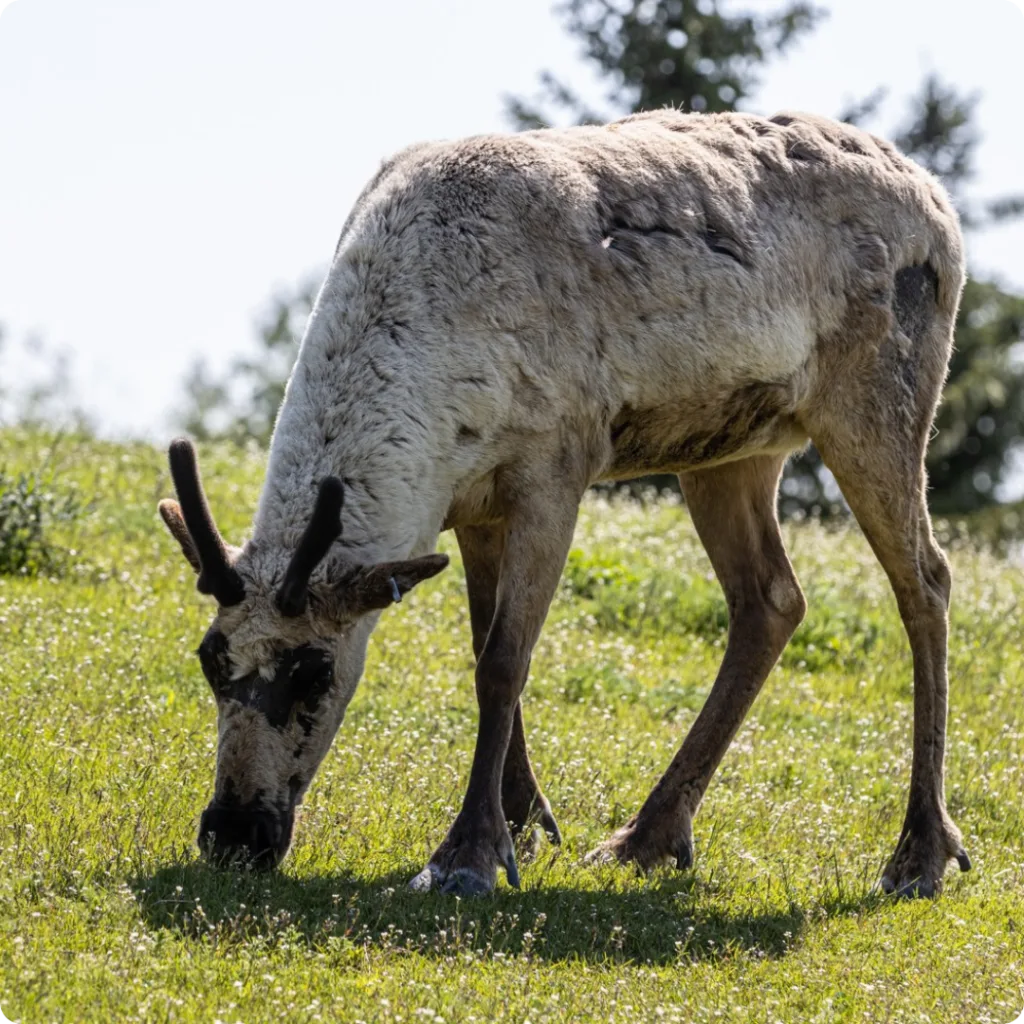
Caribou, iconic and essential to their ecosystems, are facing enormous pressures from a rapidly changing environment. Across the country, these majestic animals are at risk. In fact, most caribou populations are in decline, with some having been extirpated (that is, completely destroy) in the recent past. Herds with low reproductive output may be on the verge of disappearing all together, despite efforts to restore their habitats. The causes of this decline are many: habitat destruction and fragmentation, predation, and human disturbance all play a part.
As the clock ticks on, the urgency to protect caribou has never been higher. While habitat protection and restoration remain top priorities, the situation demands more creative innovations. That’s where the caribou at your Toronto Zoo come in. These four individuals are playing a pivotal role in an ambitious project aimed at securing the survival of caribou for generations to come.
Building a Future for Caribou Through Genetic Preservation
Behind the scenes, your Toronto Zoo caribou are part of an innovative effort to create a genetic registry of caribou living in professional care across Canada. The ultimate goal? To establish a reference database that can be used to match genetic material with wild populations, ensuring that zoo herds have the best chance for long-term survival. So far, samples have been collected from 49 individuals across Canada, enabling your Toronto Zoo’s dedicated science team to catalogue each caribou’s unique ecotype, sex, and genetic relationships.
Your Toronto Zoo is also partnering with Indigenous communities across the country to deepen the understanding of the pressures affecting wild caribou herds in specific regions and develop methods for collecting genetic samples from caribou in those areas. These partnerships are a key part of the puzzle, providing valuable insights into the local challenges these herds face. By working directly with Indigenous communities, your Toronto Zoo team can ensure that conservation efforts are tailored to the needs of each population, enhancing the chances of success.
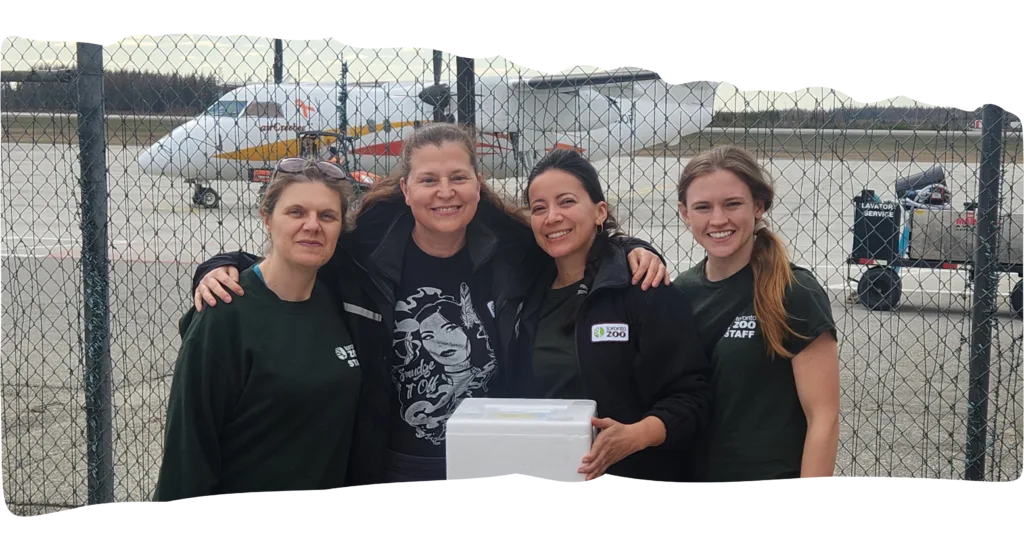
Last month, Director of Indigenous Relations, Jennifer Franks, Reproductive Science PhD Vanessa Luzuriaga-Aveiga, along with your Toronto Zoo’s Caribou BioBanking coordinator, Virginia Wolfe and Senior Reproductive Research Assistant Helen Batemen-Jackson, went north of Hudson Bay to join an Indigenous community for knowledge sharing and genetic samples.
“Travelling north to the community near Hudson Bay, to the territory through which the caribou migrate and where the people are so reliant on them, was an eye opening experience. The land was both rugged and fragile, with daily weather changes impacting the movements and behaviours of the caribou. This delicate balance, and the deep connection the Indigenous people of this territory have with the caribou, really hit home how important it is to use all the tools we have to preserve and protect this iconic species now and into the future.” Jennifer Franks, Director of Indigenous Relations, Toronto Zoo.
With climate change, habitat destruction, and biodiversity loss on the rise, this initiative is crucial. By gathering and preserving genetic material, your Toronto Zoo is preparing for the possibility that drastic measures must be taken to help repopulate wild caribou herds, supporting the species’ resilience to on-going threats. Innovative conservation efforts, such as biobanking and assisted reproductive technologies, could make all the difference for the future of caribou populations and preserving their genetic diversity.
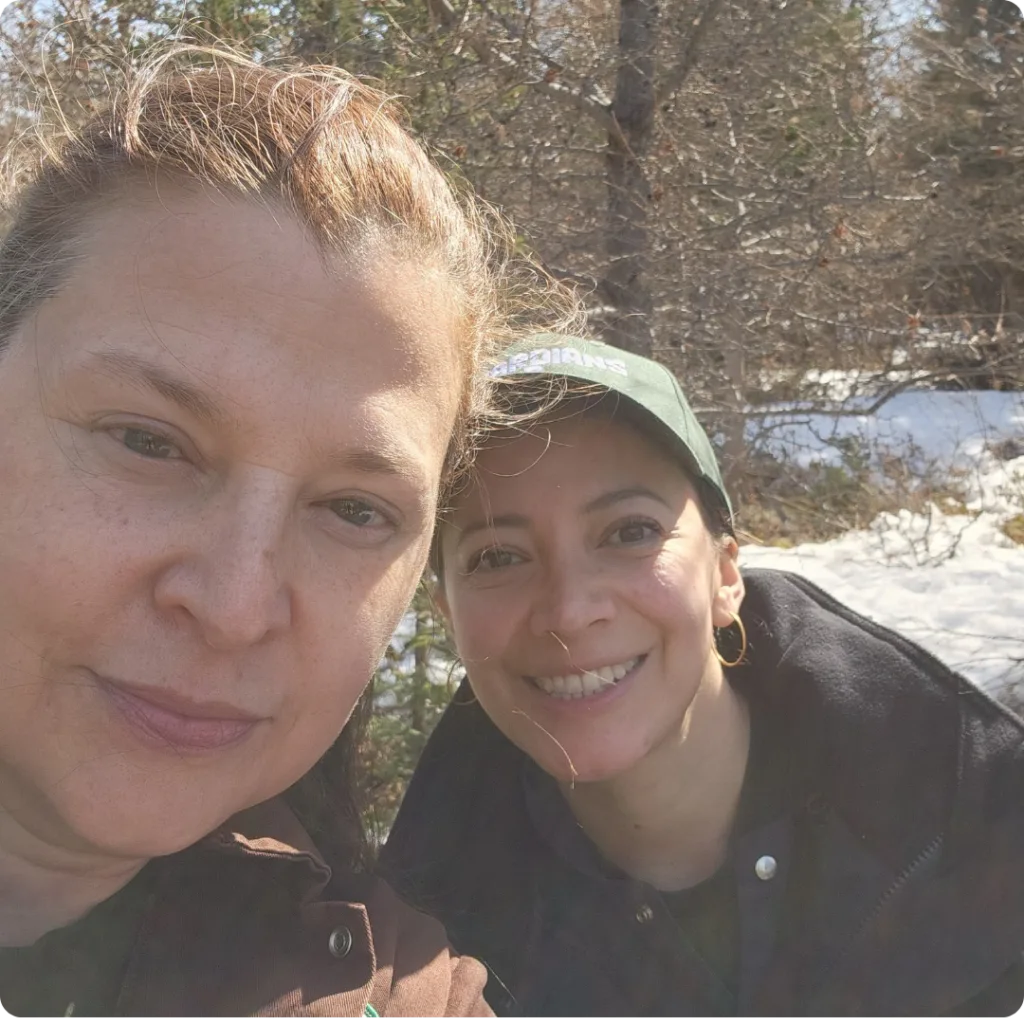
These partnerships play a crucial role in securing living cells before it’s too late, allowing your Toronto Zoo’s conservation efforts to help herds before they’re gone.
A Call to Action
The future of wild caribou populations rests not only on innovative science and research but on the collaboration of conservationists, scientists, and local communities. Together, we can ensure that these magnificent animals have a place in the wild for years to come. So, the next time you visit the Tundra trek and watch your Toronto Zoo caribou, know that they’re at the centre of an effort that could change the future of caribou conservation in Canada and beyond.
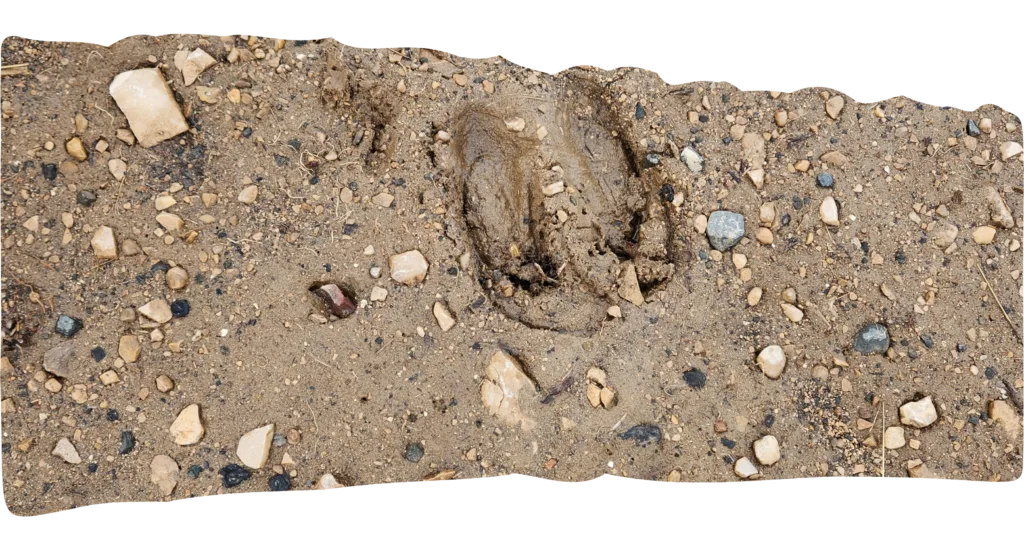
The Toronto Zoo’s Biobank
What many people do not know is that your Toronto Zoo is also host to the most diverse live-cell wildlife biobank in all of Canada. Acting as nature’s insurance policy, our conservation and reproductive scientists have a multi-pronged approach to expansion, so that genetic diversity is retained, particularly in threatened populations — once a species is endangered, genetic diversity is already limited. The Toronto Zoo Biobank acts as a safeguard to protect genetic diversity and preserve genetic material for generations to come.
If you are interested in supporting Toronto Zoo’s Wildlife BioBank, please contact Kathy Koch at kkoch@torontozoo.ca.
